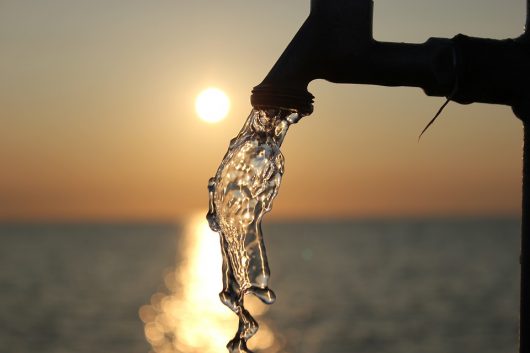USAID Works to Improve Poor Water Quality in Indonesia

Climate change, poor urban infrastructure and pollution resulting from rapid urban development and environmental destruction have led to poor water quality in Indonesia.
Although Indonesia enjoys 21 percent of the total freshwater available in the Asia-Pacific region, nearly one out of two Indonesians lack access to safe water, and more than 70 percent of the population rely on potentially contaminated sources.
Poor water quality in Indonesia is directly related to a life of poverty, as poor individuals are unable to afford clean drinking solutions.
To combat poverty and improve the lives of individuals, USAID has partnered with local governments and civil society organizations to weaken the agents of poor water quality in Indonesia by strengthening biodiversity and climate change resilience.
Climate Change
Climate change threatens to disrupt seasonal variations and thus water quality in Indonesia. The dry season may become more arid which would drive water demand, and the rainy season may condense higher precipitation levels into shorter periods, increasing the possibility of heavy flooding while decreasing the ability to capture and store water.
Increased flood conditions and rainfall facilitate the spread of disease in areas where the population lacks access to clean water and sanitation.
USAID works with the Indonesian government to help the most vulnerable areas of Indonesia become more resilient to climate change effects. The agency builds local government and civil society organizational capacity to understand the effects of climate change and to implement climate change solutions in agriculture, water and natural resources management.
More than 13,000 people have been trained in climate change adaptation strategies and disaster risk reduction. As a result, USAID has worked with more than 360 communities to develop action plans addressing the impacts of climate change, which in effect improves the poor water quality in Indonesia.
Environmental Destruction
Environmental destruction associated with unmanaged development and deforestation has left many parts of Indonesia extremely vulnerable to landslides, tsunamis and floods.
An environmental disaster furthers the cycle of poverty in Indonesia as individuals are left with even fewer resources than before. The country has lost around 72 percent of its forest cover over the last 50 years.
Large barren hillside areas and the underlying soils, both subject to heavy precipitation, greatly increase the likelihood and severity of floods. When flooding does occur, urban infrastructure is quickly overwhelmed which leads to sewage spillover and further contamination.
To combat environmental destruction and improve water quality in Indonesia, USAID works to conserve and strengthen biodiversity in Indonesia. The agency does so by building capacity in national and local government bodies and associated civil society actors, and by entering partnerships, to promote and strengthen sustainable land-use practices and management in four provinces.
Projects developed by USAID focus on conserving large swaths of lowland and peat forest with high concentrations of biodiversity.
Pollution
Indonesia has become a pollution hotspot due to its economic development and rapid urbanization. Waste from commercial and industrial processes is increasingly making its way into both groundwater and surface supplies affecting water quality in Indonesia. Moreover, Indonesia’s urban slums particularly lack wastewater treatment to combat the growing pollution.
The basic sanitation infrastructure necessary to prevent human excrement from contaminating water supplies is virtually nonexistent. Households simply dispose their domestic waste directly to a river body.
Since many Indonesians are poor and have no access to piped water, they use river water for drinking, bathing and washing. Around 53 percent of the population obtains water from sources contaminated by raw sewage, which greatly increases human susceptibility to water-related diseases.
To improve the poor water quality in Indonesia by combating the effects of pollution, USAID has facilitated access to clean water for more than 2 million people and basic sanitation to more than 200,000 people.
These actions have built one more step for individuals in Indonesia to walk out of poverty, as their low income does not inhibit them from enjoying clean drinking water.
– Alexis Pierce
Photo: Pixabay
